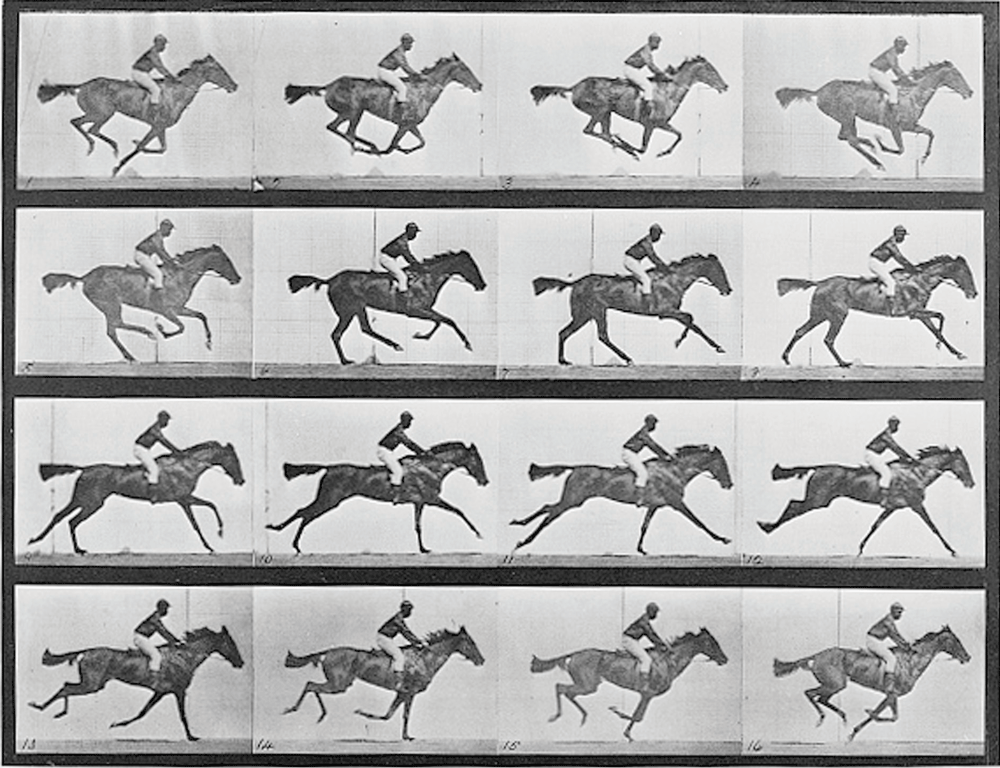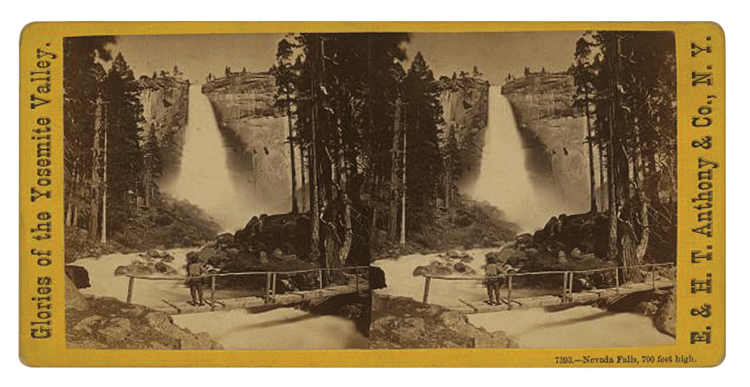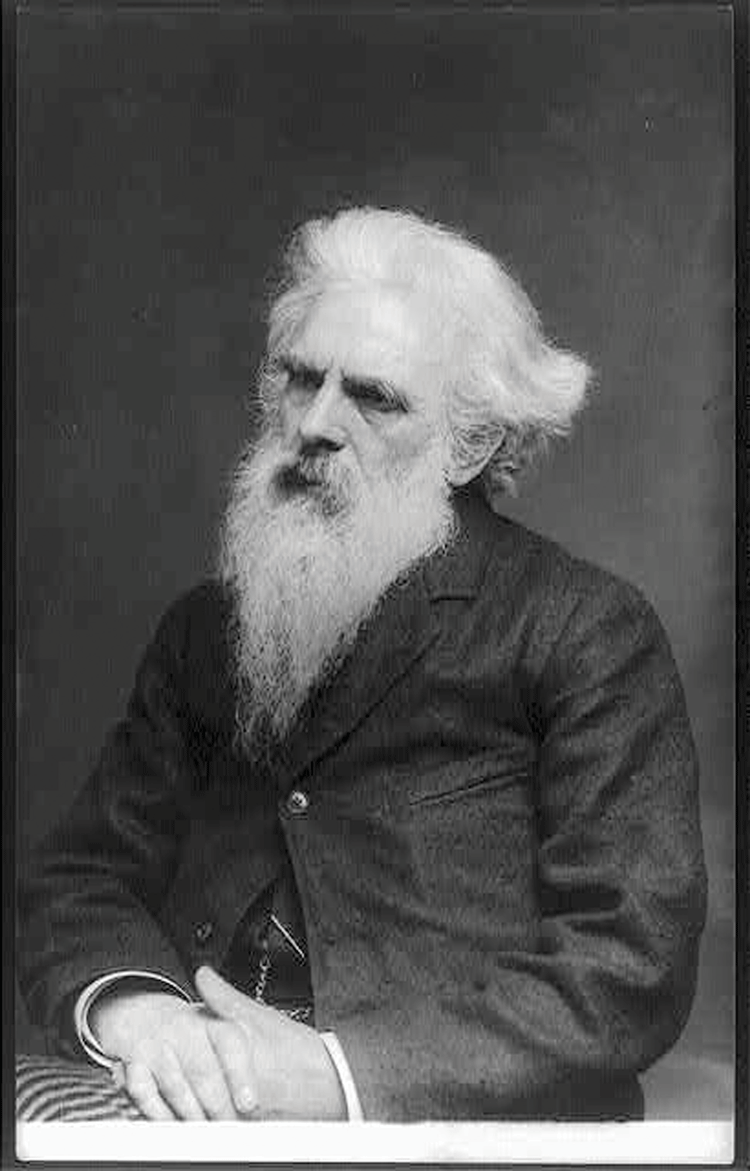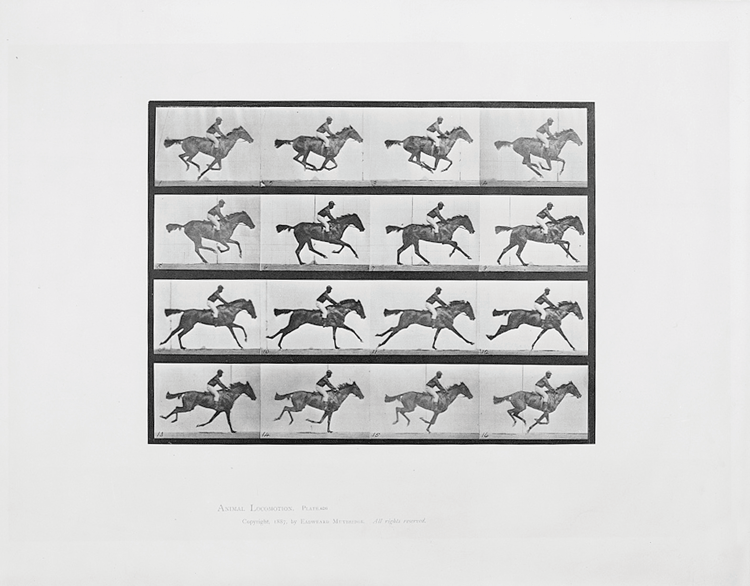Race, Racing & Eadweard Muybridge’s Photographs

Article and photos by Morgan Hensley
Discussions of racial issues can be polarizing for some and uncomfortable for many in our society. The subject’s sensitivity indicates its continuing relevance as reflected in the turbulent events of recent times: a historically black schoolhouse in Loudoun, Virginia, was marred with racist graffiti this year, profuse distrust in the fairness of law enforcement has led to extensive protests, and buzzwords such as “identity politics” and “white privilege” are routinely tossed around by pundits on the evening news.
Acknowledging the broader context of this subject, we can explore the topic from a familiar vantage: art as a commentary on our culture, and specifically, equestrian art.
As part of their “Heroes and Underdogs” series — which showcases “challenges and triumphs of those who struggled against adversity, overcame great odds and won our hearts with their passion and determination” — the National Sporting Library and Museum welcomed visitors to a free lecture with Dr. John Ott, a John H. Daniels Fellow and a professor of art history at James Madison University. His areas of expertise includes American art history before 1945, with emphasis on social class and its intersections with ethnicity and gender.
“Successful riders achieved a measure of respect, celebrity and even substantial incomes available to few other African-Americans at the time” -John Ott
The evening began with a cordial meet-and-greet with hors d’oeuvres from Side Saddle Café. Fields of Athenry, the lecture series’ sponsor, provided prosecco and rosé to help attendees cool down from the summer’s sweltering heat. Guests gradually trickled into the library, took their seats and were off to the races!
The subject of Ott’s talk was the work of Eadweard Muybridge, who expatriated from England to America in his thirties and settled in San Francisco during the California Gold Rush. A bookseller and printer by trade, he experimented with portrait and landscape photography; his stereographs of Yosemite Valley in its yawning immensity and unsullied glory are familiar icons of the frontier.

In the 1870s, his experimental time-lapse photography caught the eye of railroad tycoon, former governor of California and thoroughbred breeder Leland Stanford. Stanford invited Muybridge to his farm in Palo Alto to confirm or debunk his “theory of unsupported gait,” the simultaneous suspension of all four of a horse’s hooves in midair while at a gallop.
Muybridge, who possessed an artist’s eye and a scientist’s methodology, arranged a gauntlet of cameras with shutter triggers, ultimately confirming Stanford’s hypothesis. The 12 frames captured at Stanford’s farm were featured in Time’s “100 Most Influential Images of All Time” last year.
The assignment changed the course of Muybridge’s work. In 1887, Muybridge accepted a position at the University of Pennsylvania, where he began his pioneering photography project, Animal Locomotion.
Muybridge set up an array of cameras to capture and dissect the inner workings of a second, examining those overlooked movements that comprise children leapfrogging, a buffalo sauntering and a black jockey galloping down a track. This final series was the subject of Dr. Ott’s presentation.

Those frames contain a robust microcosm. By zooming out of the photographs we see the larger picture – a snapshot of Gilded Age Philadelphia, Jim Crow America and complex racial tensions. The photograph itself is a stark black and white; the messages contained within are all shades of gray.
Though history has largely erased their legacy, black jockeys were a familiar sight at the racetrack during the Gilded Age (c. 1870–1900). “Successful riders achieved a measure of respect, celebrity and even substantial incomes available to few other African-Americans at the time,” Ott said.
Jockeys’ independence and opportunity set them apart from their black peers, 80 percent of whom were menial laborers while the rest were barbers, caterers and coachmen — middle-class professionals in trades deemed “too servile” for whites.
In fact, black jockeys were very well represented on the racetrack. Although African-Americans accounted for 13 percent of Philadelphia’s population, the largest concentration of African-Americans outside of the South, they made up 22 percent of jockeys, and won 13 of the Kentucky Derby’s first 15 runnings since its inauguration in 1875. The racetrack was one realm exempt from segregation, an “exception to these rules of the color line, both in the stands, and on the
oval,” Ott notes.
One jockey in particular was a standout. “At the height of his career in the late 1880s, Isaac Murphy was likely the highest paid rider in America and, adjusting for income, the equivalent of a multimillionaire. His excellent track record had allowed him to negotiate generous contracts, and in time he came to own a lavish home, real estate holdings and several horses,” Ott said.

Murphy epitomized the sporting world’s elegance: dapper, virtuous and professional in his demeanor and his skillfulness. Yet these compliments were barbed, backhanded attacks against Murphy’s race; his praise came at the expense of his African-American brethren. He was portrayed as an exception to his race’s “immoderation, depravity and propensity for violence,” Ott said.
Black jockeys were often likened to centaurs, a nasty insult that invoked a bestial, sub-human physicality. While gambling at the racetrack was tolerated in whites as a gentlemanly pastime, the same vice was perceived as indicative of blacks’ inherent impulsiveness and inferior rationality.
There is then, of course, the simple fact that history has silenced and erased the legacy of black jockeys for more than a century. Recently, academia has unearthed and reevaluated this subject.
The art world has seen a similar, parallel resurgence, most notably in the work of Andre Pater, whose exhibit “In a Sporting Light” is on display at the National Sporting Library and Museum until Aug. 13. Among Pater’s oil pastels are sympathetic portrayals of black jockeys. Pater’s artwork and Dr. Ott’s lecture thereby form a symbiotic relationship; the former gives the marginalized jockeys a face, while the latter lends them a voice. ML


